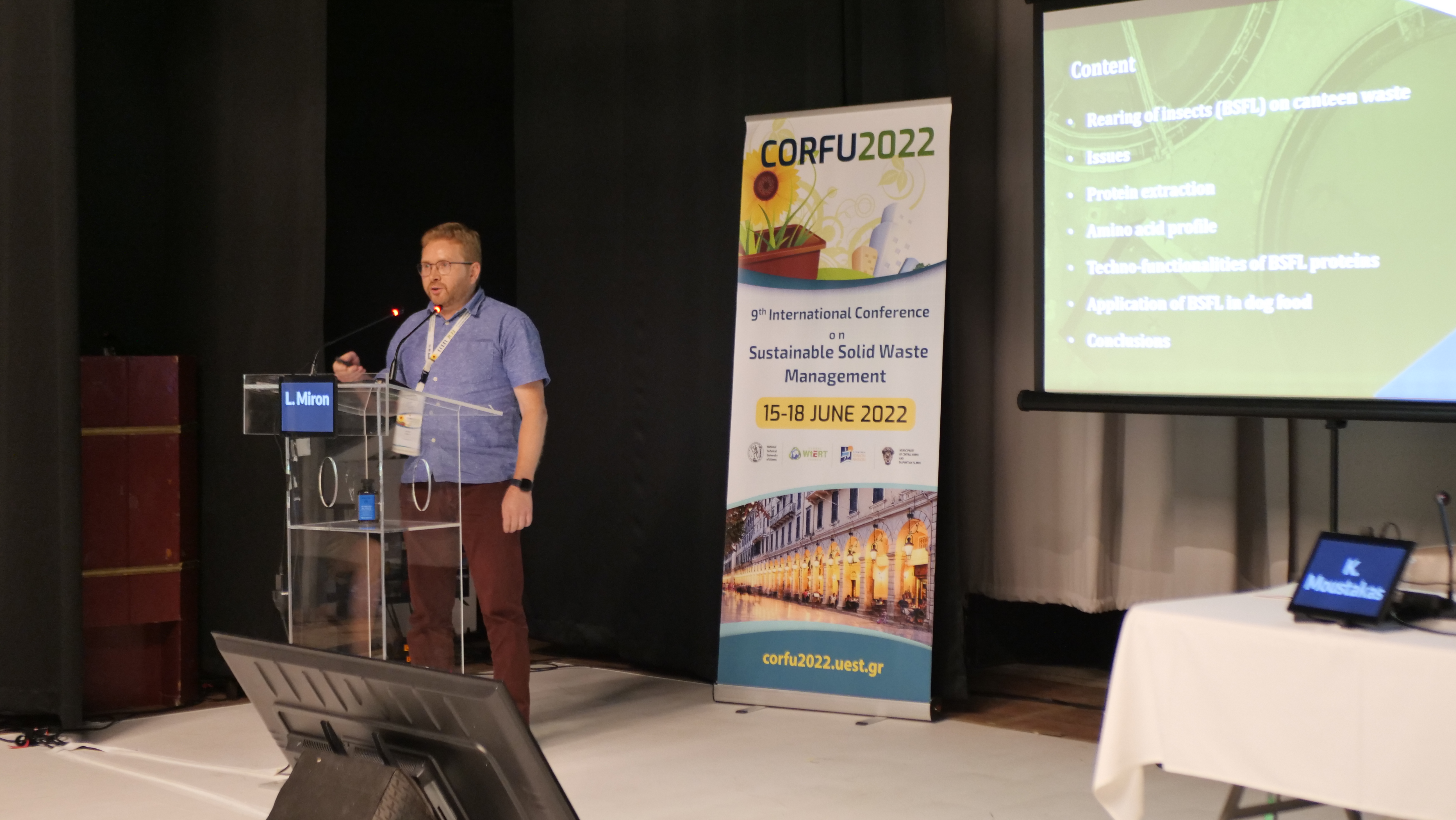Lucian Miron from Zetadec represented SCALIBUR at the 9th International Conference on Sustainable Solid Waste Management, held in Corfu from 15-18 June 2022. He made a presentation about the role of black soldier fly larvae in a circular economy.
Regulation and consumer acceptance are currently the largest barriers to the adoption of insects as viable sources of proteins and lipids in Western countries. Lucian focused on consumer acceptance and the fact that consumers are less reluctant to consume insects when they are included (hidden) in food products as ingredients (proteins or lipids) rather than consuming the whole insect. Therefore, a fractionation method was developed in the SCALIBUR project to separate the components: proteins, lipids, and chitin.

The quality of the protein was analysed by essential amino acid index (EAAI) and showed that black soldier fly larvae protein is better than other insect proteins (e.g. T. molitor, Z. morio) or plant protein (e.g. pea and bean) and in the same range as soybean but lower than casein. The techno-functionality of black soldier fly larvae protein shows a good oil binding capacity. Thus, this protein can be incorporated in meat analogues, meats, sausages, cakes and bakery.
During the project the black soldier fly larvae protein was incorporated in an industrial dog food formulation developed in collaboration with partner Nutrition Sciences. This formulation was compared with a conventional formulation containing conventional sources of proteins and lipids. Both formulations were processed by extrusion at two different temperature settings. The dog food kibbles obtained by extrusion showed no significant difference in terms of texture, energy consumption (kWh/tonne), degree of expansion, or bulk density between the formulation with insects and conventional formulation. Moreover, the formulation with insects showed higher durability compared with the conventional formulation. Therefore, the expectation is that black soldier fly larvae protein can successfully replace conventional proteins and lipids in dog food.
You can view Lucian’s slides here.

No Comments
Comments are closed.